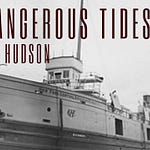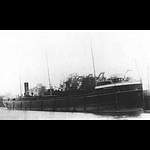n the early morning hours of May 23, 1910, Lake Huron was shrouded in one of those deadly "pea-soup" fogs that Great Lakes sailors dreaded most. Through this ghostly veil, the ore carrier Frank H. Goodyear was heading downbound toward Cleveland, her holds heavy with iron ore from Duluth. But this wasn't just any cargo ship—she was the flagship of her fleet, distinguished by an ornate Pullman railroad car bolted directly to her deck, a luxury befitting her namesake, the railroad tycoon who developed the famous Pullman car.
What happened next would become one of Lake Huron's most tragic maritime disasters. At 35 miles off Point aux Barques, near Michigan's Thumb, the fog became a death shroud. The upbound steamer James B. Wood, also blind in the thick mist, rammed directly into the Goodyear's port bow. In just four devastating minutes, this 416-foot flagship disappeared beneath the waves, taking 17 of her 22 crew members to their deaths in the dark, cold waters.
Join host Yanni Hamburger as we dive deep into this forgotten tragedy of the Great Lakes. We'll explore how a routine cargo run became a nightmare, examine the deadly role that fog played in Great Lakes navigation, and uncover the human stories behind the headlines. From the luxury railroad car that made this ship unique to the desperate rescue attempts in the aftermath, this is the story of how Lake Huron claimed one of its most distinguished victims.
The wreck lay lost for nearly a century until divers finally located her remains in 2003. But the questions remain: Could this disaster have been prevented? And what can the Frank H. Goodyear teach us about the unforgiving nature of the Great Lakes?












Share this post